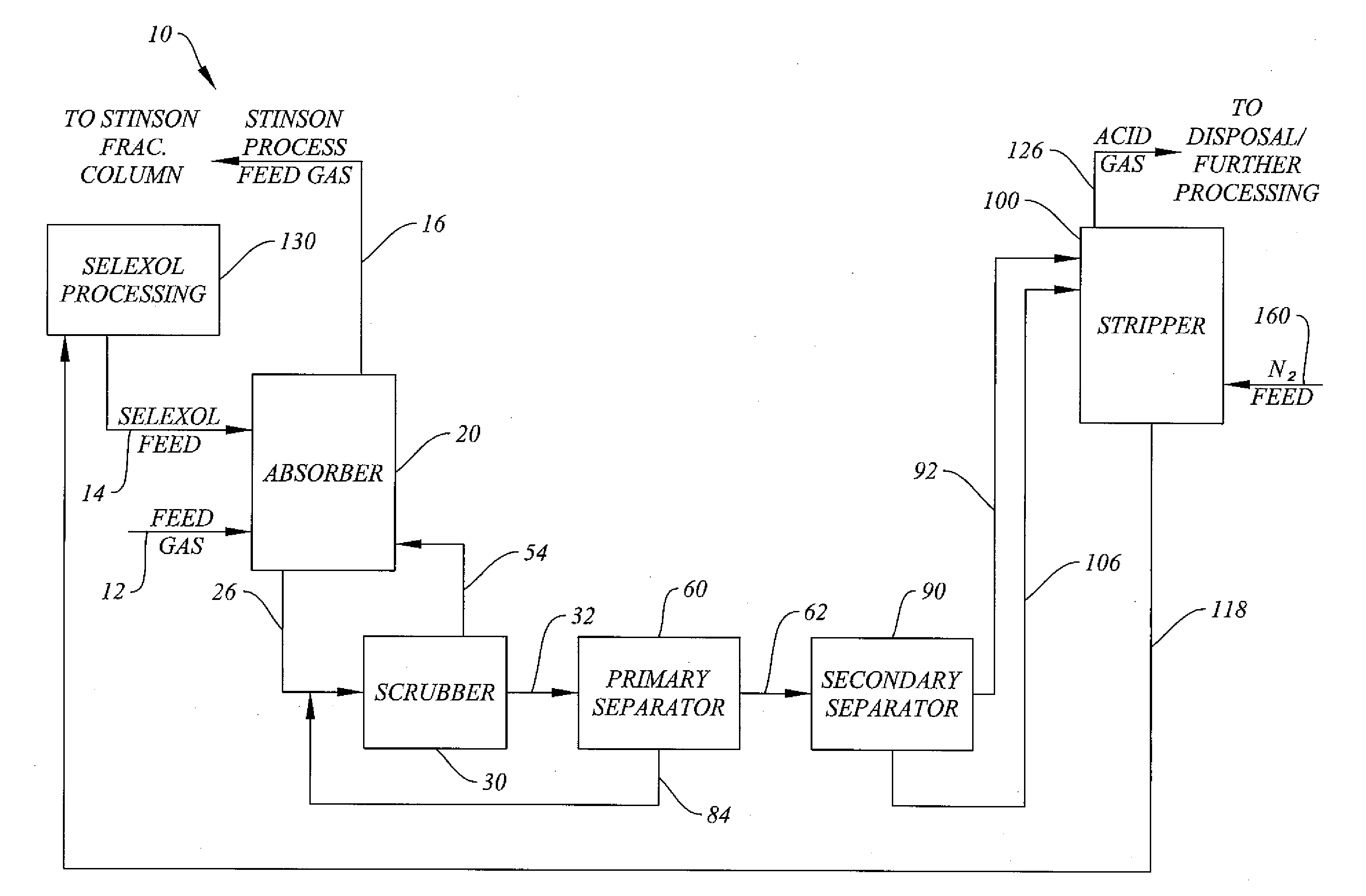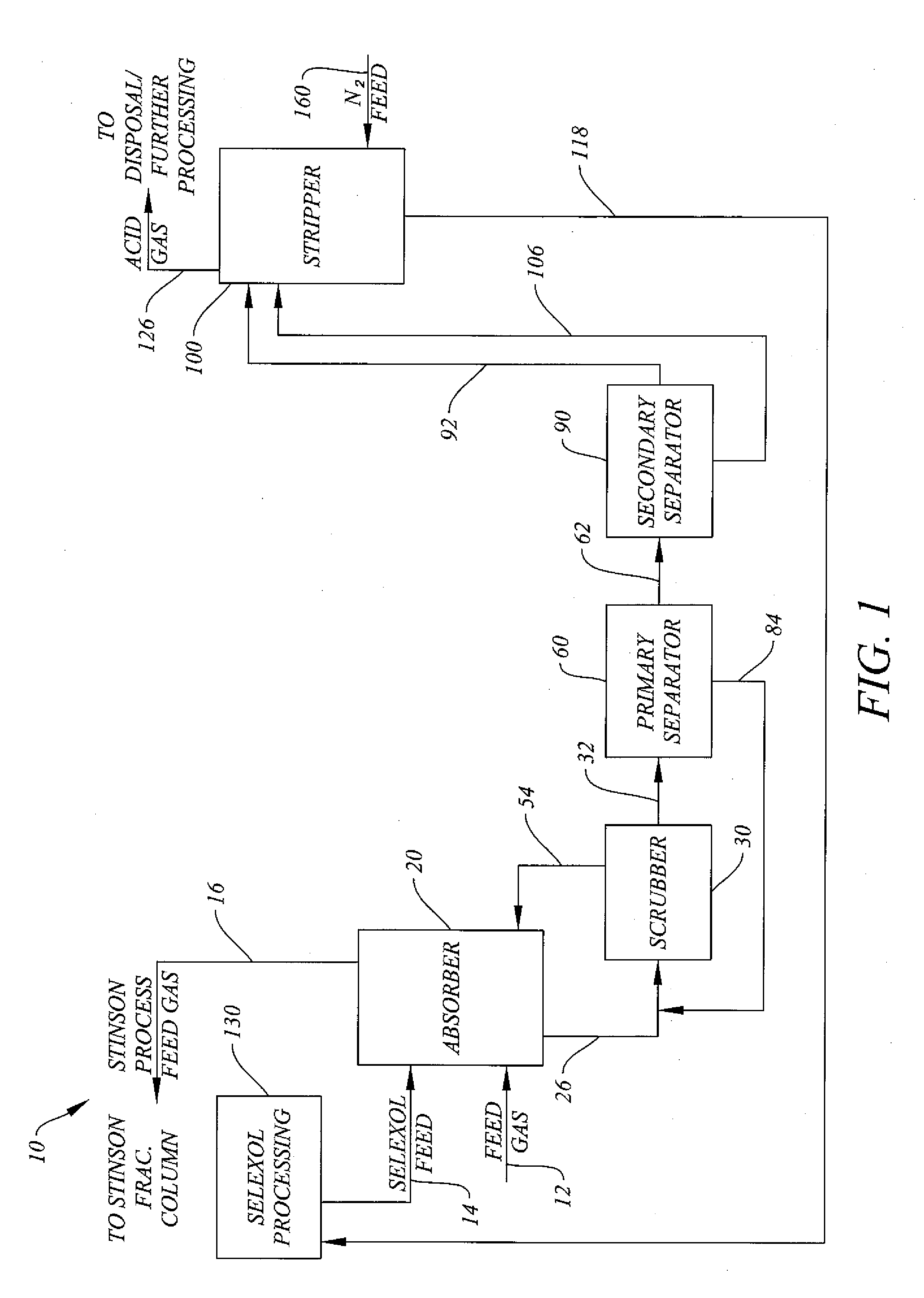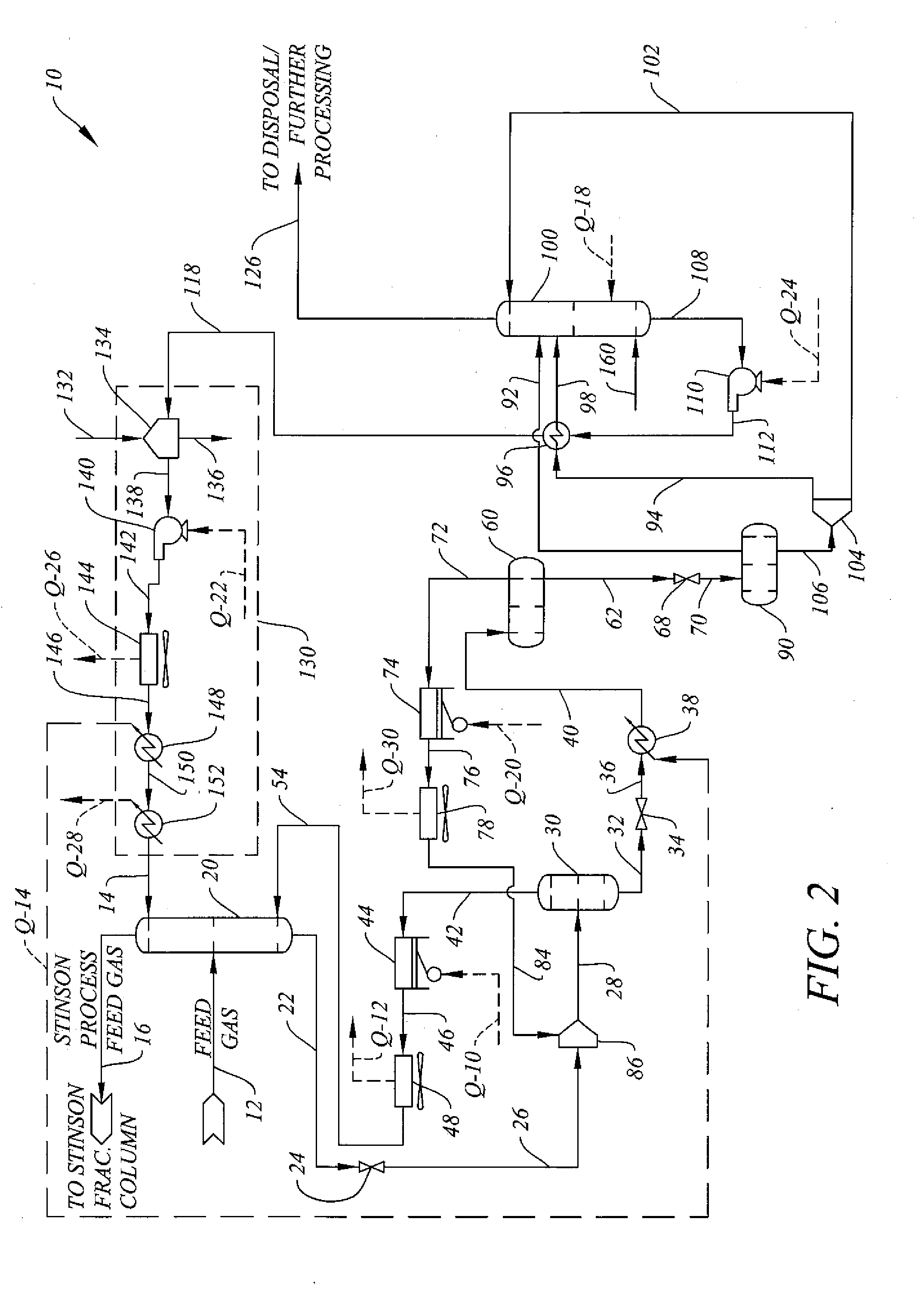System and Method for H2S Removal Integrated with Stinson Process CO2 Removal
a technology of stinson process and co2 removal, applied in the direction of separation processes, liquid degasification, gaseous fuels, etc., can solve the problems of limiting the ability to use co2 /sub>waste stream for flooding operations, waste stream amount, etc., to facilitate the economically efficient and selective removal of h2s, reduce operating costs through fuel savings, and increase overall process efficiencies
- Summary
- Abstract
- Description
- Claims
- Application Information
AI Technical Summary
Benefits of technology
Problems solved by technology
Method used
Image
Examples
example
[0027]The flow rates, temperatures and pressures of various simulation flow streams referred to in connection with the discussion of the system and method of the invention in relation to FIG. 2 for a feed gas stream flow rate of approximately 200 MMSCFD and containing 7% nitrogen, 19.5% methane, 69.1% CO2, and 3.7% H2S appear in Table 1 below. The values for the energy streams referred to in connection with the discussions of the system and method of the invention in relation to FIG. 2 appear in Table 2 below. The values discussed herein and in the tables below are approximate values.
TABLE 1FLOW STREAM PROPERTIESStream FlowRef.%%%RateTemp.Press.No.% N2 CO2H2S% CH4 DEPG(lbmol / h)(deg. F)(psia)12769.1 3.719.502195679.9671.9140.09800.012099.89 4889.340700167.7700.002 21.5neg19889.1 95.4670.122neg55.4 7.9 0.00736.613350.3110.1672.126neg55.4 7.9 0.007 36.613350.38631028neg62.1 7.80.0063016306.5 8731032neg40.3 10.30.000549.39910.386.630536neg40.3 10.30.000549.39910.366.512040neg40.3 10.30....
PUM
| Property | Measurement | Unit |
|---|---|---|
| temperature | aaaaa | aaaaa |
| pressure drop | aaaaa | aaaaa |
| temperature | aaaaa | aaaaa |
Abstract
Description
Claims
Application Information
 Login to View More
Login to View More - R&D
- Intellectual Property
- Life Sciences
- Materials
- Tech Scout
- Unparalleled Data Quality
- Higher Quality Content
- 60% Fewer Hallucinations
Browse by: Latest US Patents, China's latest patents, Technical Efficacy Thesaurus, Application Domain, Technology Topic, Popular Technical Reports.
© 2025 PatSnap. All rights reserved.Legal|Privacy policy|Modern Slavery Act Transparency Statement|Sitemap|About US| Contact US: help@patsnap.com



